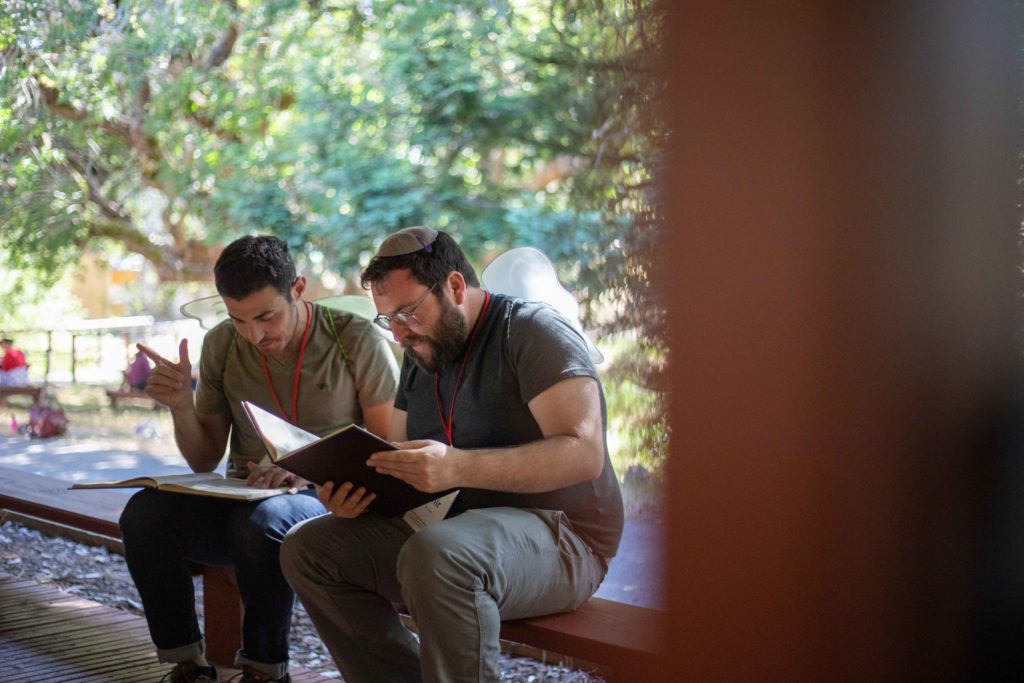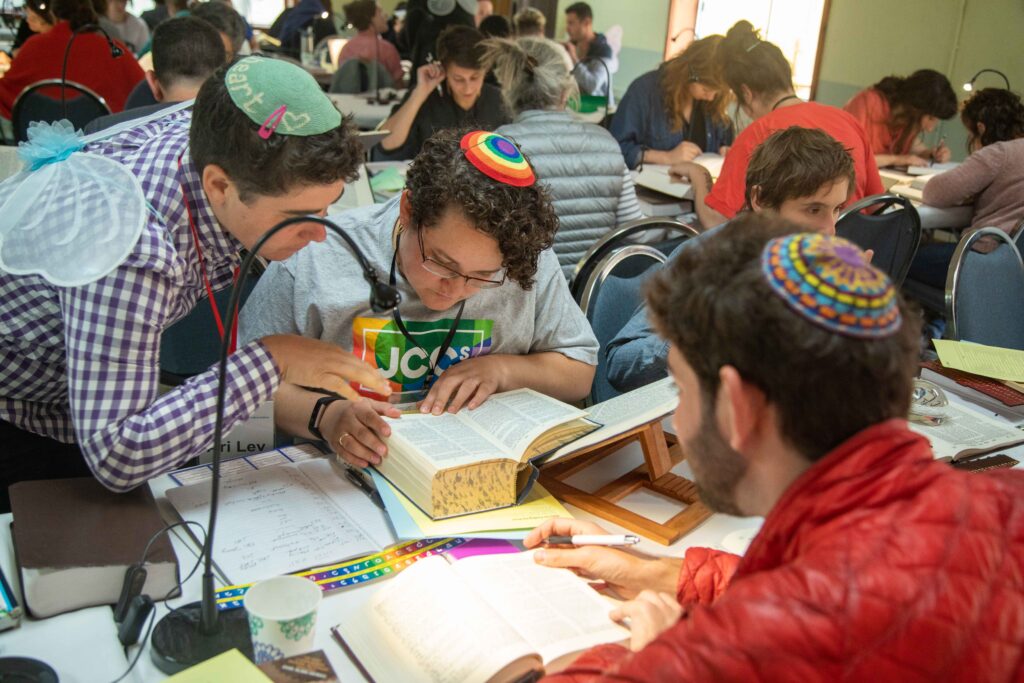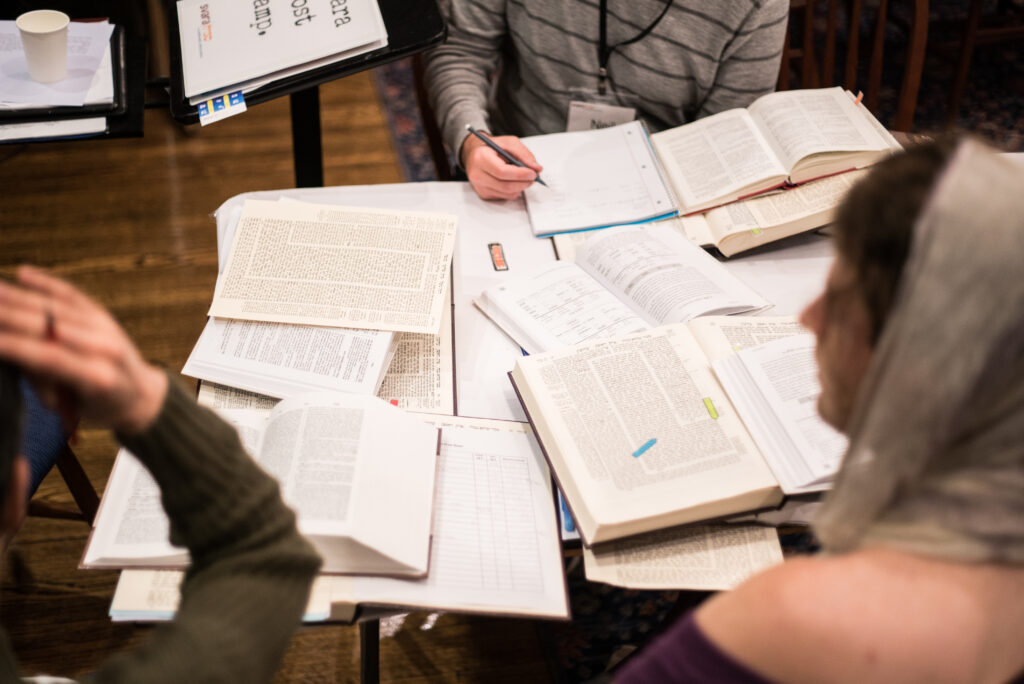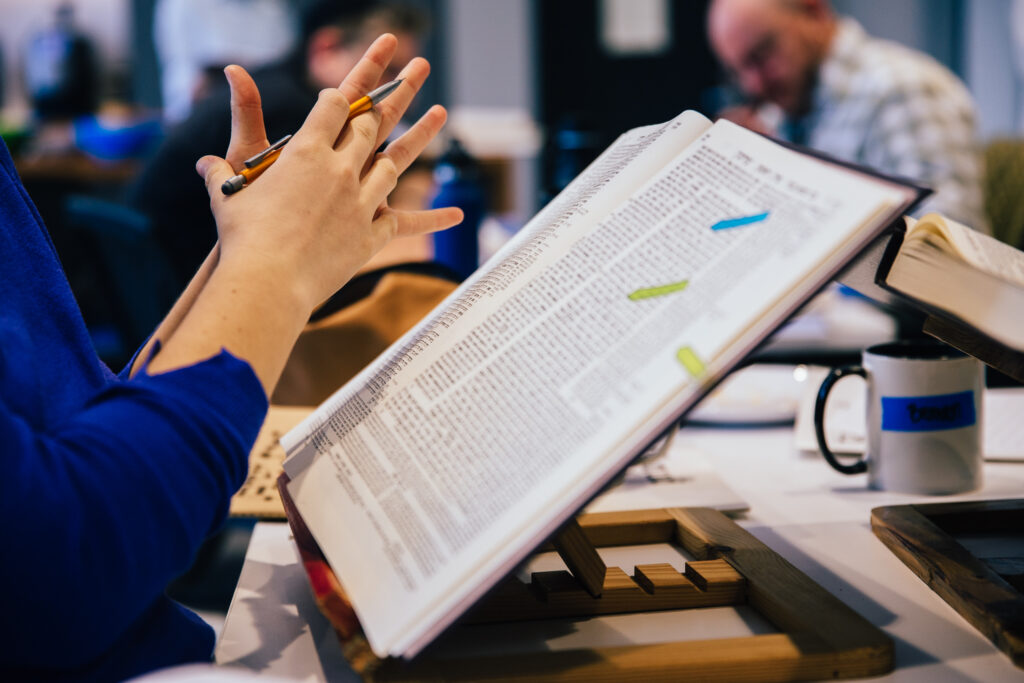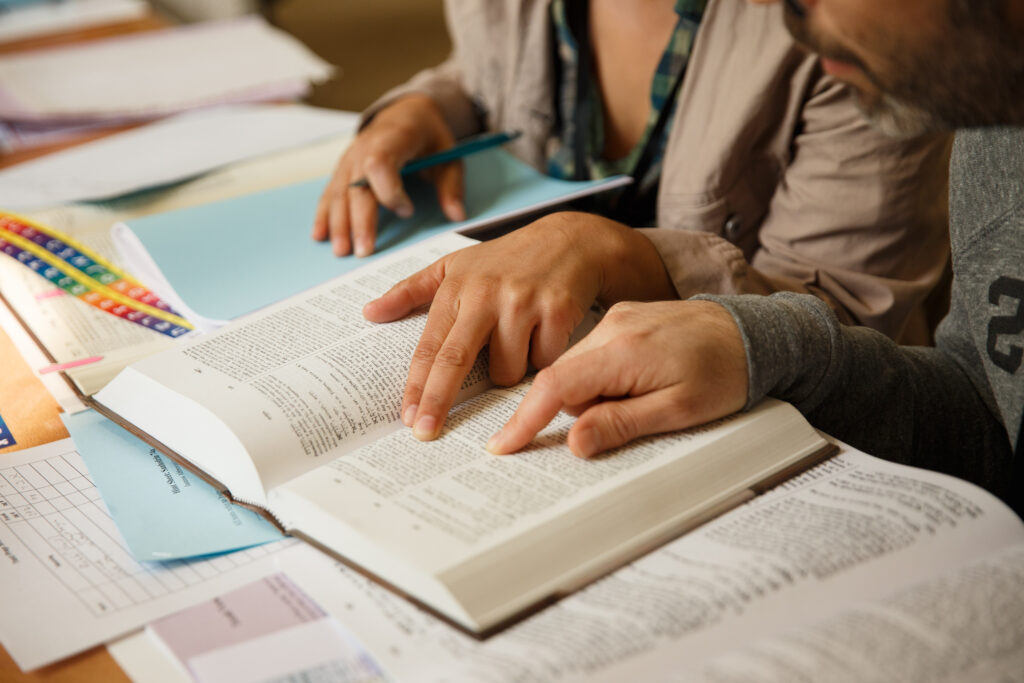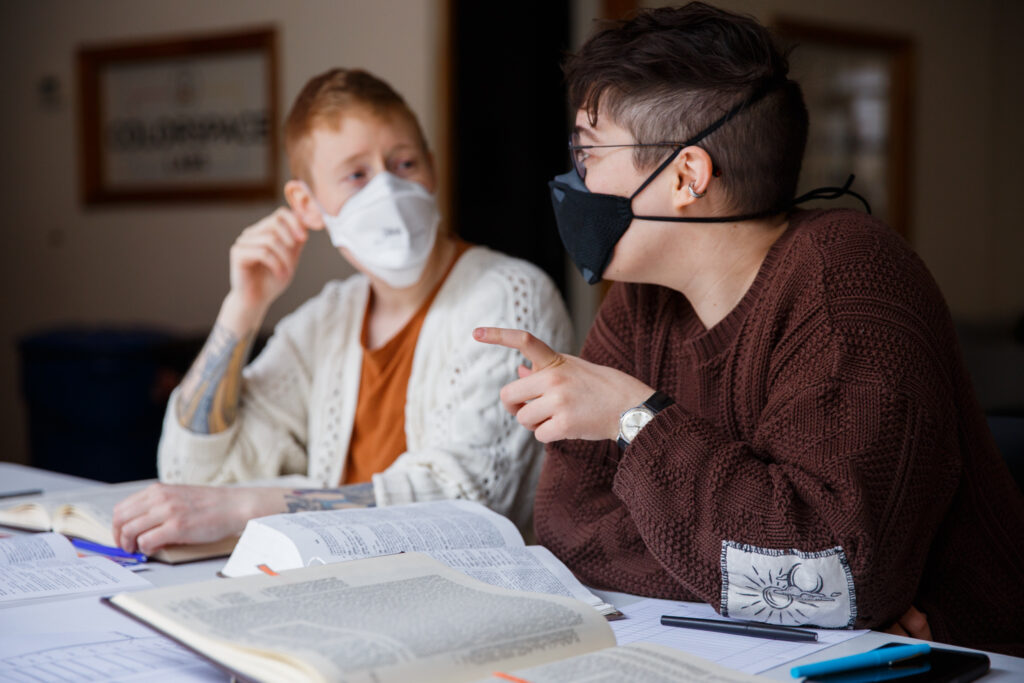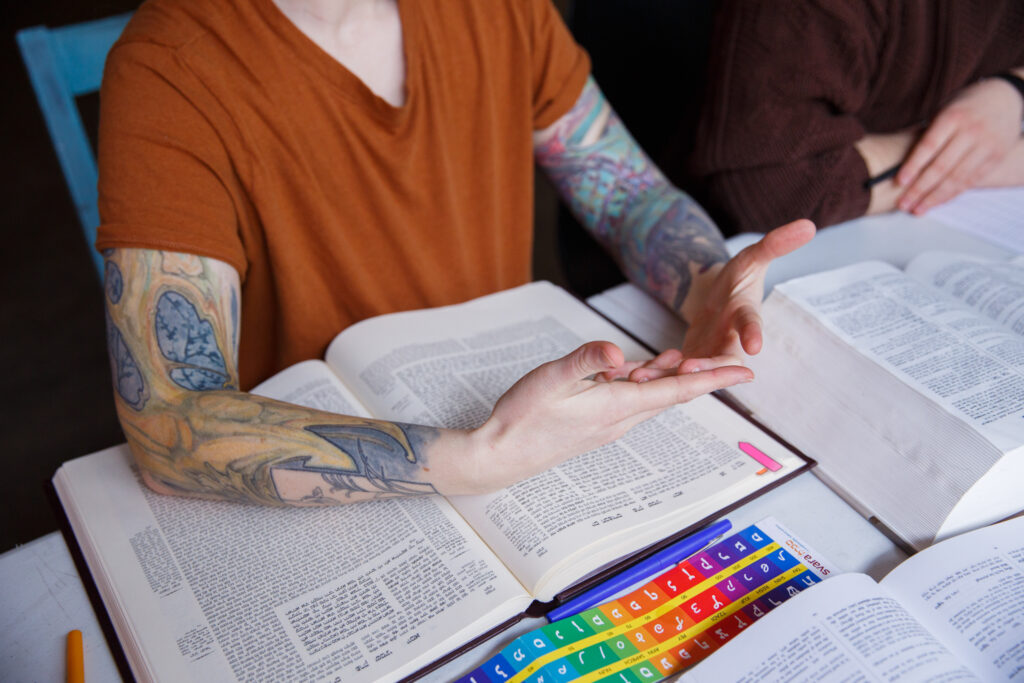Earlier this week, we siyum-ed, celebrating the 150 SVARA-niks who dug in deep this Elul as we moved into this season of repair, restoration, and renewal. A siyum is a celebration that marks the completion—for now!—of learning a set of Jewish… something, usually a text. In our case, maybe that’s a sugya (a section of Talmud), a set of letters, a grammatical structure, or some Torah that’s off-the-page. Whatever you’re siyum-ing, this was a deep Elul in our yeshiva.
We had our first-ever Hardcore Talmud Intensive, where folks learned for almost three hours a day, four days a week. (Y’all, this is the same amount of bet midrash mileage as two in-person Queer Talmud Camps!) We had folks in two sections of Mixed-Level Bet Midrash explore Talmudic texts related to teshuva, repair, restoration, and reparations. We had folks in Conjugation for Liberation, learning new grammatical structures, expanding their toolkit as players and translators and creators of Torah. AND we had folks learn the alef-bet, going letter-by-letter to encounter the Hebrew alphabet, opening new doors to learning and translating texts on their own.
As I sat with the beautiful image of so many of our dazzling, queer selves going deep this Elul, letter-by-letter, word-by-word, phrase-by-phrase, I kept coming back to a teaching that we explored in Mishnah Collective earlier this year (on a special edition of Mishnah Collective between moments of learning Avot!), a famous mishnah that comes in Masechet Pe’ah, in the tractate that deals with the agricultural laws to leave the corners of your field unharvested so that people who do not own land can glean and gather their own foods.
The mishnah lists a number of mitzvot, of practices, for which there is no limit, and then a list of practices that, when we do them, we get the fruits (yes, fruits!) of the practice in this world, and additional benefit in the next world. Through describing these lists in this way, the mishnah is showing us how important these practices are; they’re limitless, and the benefits of them transcend our experience in this world. The mitzvot on these lists include: leaving the corners of our fields for landless people to glean from, bringing the first fruits to the Temple (yes, this mishnah is fruity!), honoring the people who have raised us and shaped us, acting lovingly (gemilut hasadim), facilitating whole relationships between two people. This is the inter-personal, the injunction to be in right relationship to and with the people around us. These mitzvot are about how we act.
And then, the mishnah tells us, וְתַלְמוּד תּוֹרָה כְּנֶגֶד כֻּלָּם / talmud torah ke’neged kulam. Talmud Torah, the practice of learning Torah, the experience of embodying Jewish wisdom and immersing in it fully, is k’neged kulam, which is often translated as “corresponding to all of them [on the list],” or “greater than all of them [on the list].” Learning Torah far exceeds all of the previously listed mitzvot.
Y’all know I’m always questing about the act of learning and what it means to the Rabbis. What is it about studying and immersing our minds and hearts in this tradition that the rabbis think is so transformative? How can it be that they say that it is more important than each of the interpersonal practices that they previously named?
I’ve been thinking a lot about this teaching this Elul, and, as always, consulted my comrade Jastrow to help me as I was feeling vexed. Jastrow tells us that neged (of k’neged kulam)—which is from the root nun, gimel, dalet—can mean “corresponding to,” or “against,” as it’s translated most often, and also means “towards.” It’s not that our learning is superior to these things, or better than these things in some way. It’s that talmud torah is towards all of these things; out of our learning comes these other things.
This is what y’all have been doing day in and day out of this season; this Elul, you’ve shown me how real this alternate read is. Through the way that you embody this tradition, from the ways I’ve seen our conversations, our relationships, our ways of being players grown and nurtured—I’ve seen you learning towards so much. I’ve seen it in myself as I feel myself being softer, slower, more gentle each day we learn together. I’ve seen this in the bet midrash as y’all turn your “I found…” statements into “We found…” and I feel it when you beam love at each other during recitations, when you celebrate so hard when someone gets the word they were waiting for. The learning we’ve done is not just “learning,” but “learning k’neged kulam”—learning that is towards these larger purposes: towards abundance, towards giving, towards honor, towards healing, towards repair, towards establishing inter-personal wholeness.
This is why we learn in Elul, so that we can show up fully to the work ahead, in Tishrei and beyond, with open hearts and a clear direction. And this is why we learn all year round—so that we can keep moving towards a gorgeous, beautiful, liberated world with our full selves. Whatever it is that you’re finding yourself learning in this moment—whether it’s a letter, a word, a line, or a hiddush (a new realization) about yourself or the people around you—it’s my hope, and (as I’ll indulge myself a bit and speak for a moment on behalf of the teachers and fairies) it’s all of our hope, that this learning that we did and will continue to do together is towards something, that it helps you move and sit with whatever and wherever you’re going. And we bless y’all—and all of us, why not?!—that you feel the fruits of this learning here, and in the days—and worlds, to come.

